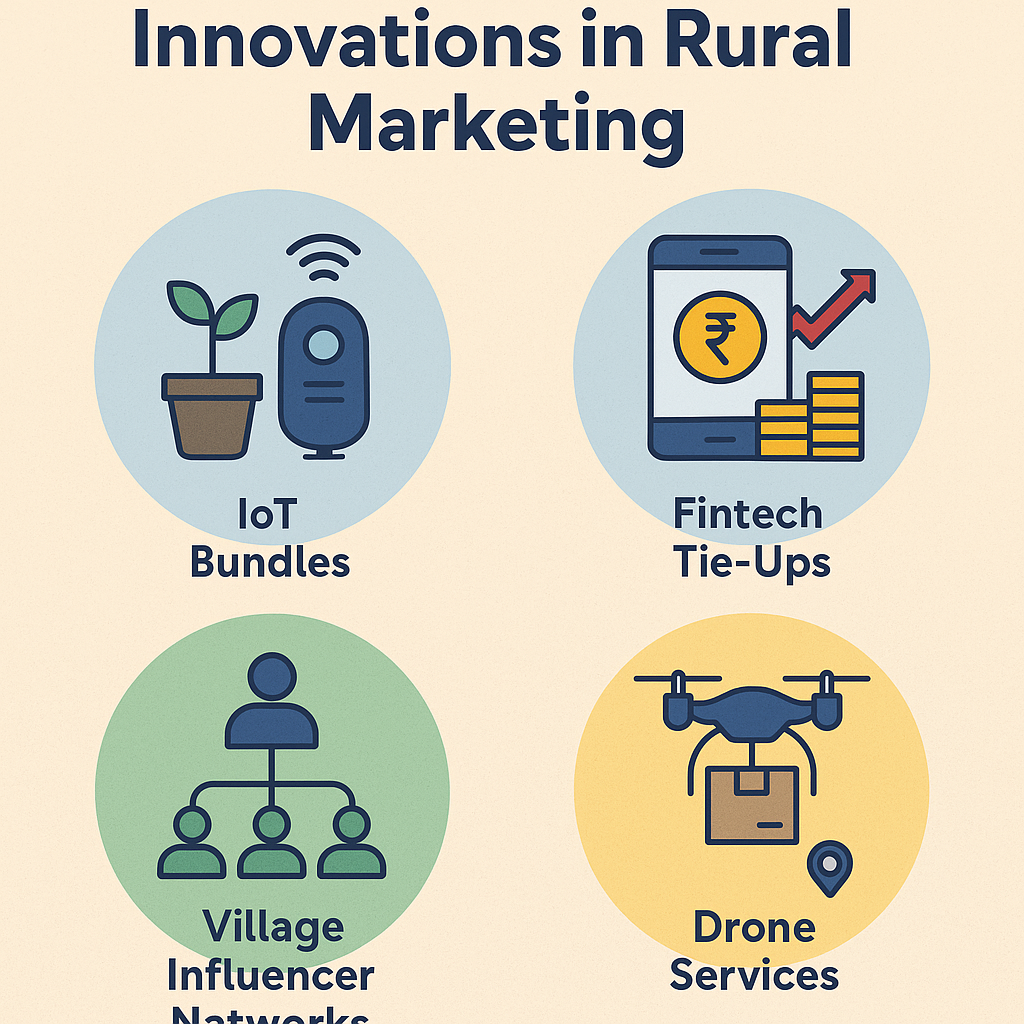 What is Rural Marketing?
What is Rural Marketing?
Rural Marketing: An Introduction
Despite rapid urbanization, 43% of the global population still lives in rural areas. Businesses acquire market share and drive revenue growth by promoting their products or services in rural areas. As a tailored marketing system, rural marketing focuses on the planning, development, distribution, pricing, and promotion of products/services to consumers living in non-urban areas like villages and hamlets.
According to The Hindu, “Rural marketing is a marketing system that involves the development, planning, pricing, and distribution of goods and services so that people in rural areas can access basic products at fair prices. In fact, the growth of most sectors in rural India — which is an agriculture-based economy — is determined by the rural marketing system.”
There was a time when the term rural marketing was synonymous with agricultural marketing. However, rural consumers nowadays demand and consume products/services that are popular with urban consumers. Likewise, smartphone access creates opportunities for companies to engage and influence rural consumers using digital marketing channels.
We can understand what is rural marketing by discussing the distinct marketing systems’ importance, scope, characteristics, challenges, classifications, and innovations.
Understanding Rural Markets
Rural markets differ significantly from urban markets in terms of demographics, income levels, infrastructure, and consumer behavior. Some key characteristics include:
Lower Population Density: Rural areas have a smaller and more scattered population.
Limited Access to Technology: Internet penetration and smartphone usage are lower than in urban areas.
Traditional Consumer Behavior: Word-of-mouth and community influence play a major role in purchasing decisions.
Seasonal Income Patterns: Many rural consumers depend on agriculture, leading to seasonal variations in income and spending habits.
Importance and Scope of Rural Marketing
The importance of rural marketing for companies can be determined from two important facts. Firstly, the rural population exceeds the urban population in several states in India. Secondly, new income opportunities and government schemes increase the disposable income of rural consumers consistently. Hence, companies generate demand for their products in rural marketing using both traditional and digital marketing channels.
At the same time, the surge in the demand for non-agricultural products has been extending the scope of rural marketing. A study conducted by Technopak suggests a surge in the demand for pharma products, auto parts, and fast-moving consumer goods in rural areas. The extended scope makes it essential for companies to focus on the distribution and availability of their products/services in non-urban areas.
Digital Penetration in Rural India
Rural markets are undergoing a rapid digital transformation, as evidenced by significant growth in internet and smartphone penetration. As of March 2024, there were approximately 398.35 million rural internet subscribers in India, with 95.15% of villages having 3G/4G connectivity under initiatives like BharatNet. Moreover, IAMAI projects that by 2025, around 56% of all new internet users in India will come from rural areas, indicating that digital touchpoints are becoming increasingly vital for reaching these consumers. For rural marketers, this shift means blending traditional on-ground tactics—village haats, mobile vans, local influencers—with digital channels such as WhatsApp groups, SMS campaigns, and vernacular social media content. Understanding patterns of online behavior (e.g., preference for regional-language content, peak usage times) can help tailor digital strategies that resonate with rural audiences and drive engagement.
Role of Government Initiatives and Infrastructure
Government initiatives and infrastructure development play a pivotal role in enabling rural marketing. Programs under Digital India and PMGDISHA (Pradhan Mantri Gramin Digital Saksharta Abhiyan) are boosting digital literacy, with millions of rural citizens gaining basic computer and internet skills through Common Service Centres and training programs. Improved connectivity reduces geographic barriers, allowing brands to deploy hybrid distribution models—combining e-commerce tie-ups or direct-to-consumer platforms with local pickup points or micro-distributors. Additionally, better roads and logistics networks gradually alleviate last-mile delivery challenges, although innovative solutions (e.g., mobile kiosks, village-level entrepreneurs) remain crucial for truly accessible distribution. Marketers who monitor infrastructure trends can proactively adjust their supply chain and outreach plans to ensure the availability and affordability of products in diverse rural pockets.
Features/Characteristics of Rural Marketing
Rural marketing differs from urban marketing in many aspects. Strategists make marketing and promotional campaigns successful by focusing on these distinct features or characteristics of rural marketing.
Varying Demand Patterns
A large percentage of rural customers still earn agricultural income. At the same time, many rural people earn income by engaging in non-farm activities like animal husbandry, mushroom farming, and bee hiving. Also, government schemes and programs make funds available to many rural households living below the poverty line. Income inequality leads to fluctuations in demand for products/services from time to time.
Differential Pricing
The disposable income and purchasing power of rural customers are lower than that of urban consumers. Companies cannot generate demand for a product or service in rural markets without making it affordable. Leading brands make rural customers buy their offerings by supporting differential pricing. They usually reduce the price of a product/service when targeting rural consumers.
Content Localization
When planning urban marketing campaigns, leading brands create content in Hindi and English. However, they must create content in multiple regional languages due to the low literacy rates in rural areas. At the same time, they have to engage rural consumers by localizing the content according to village-specific social and cultural environments.
Traditional Marketing Channels
Urban marketing allows companies to replace traditional marketing channels with digital marketing channels. However, they cannot create brand awareness and generate demand in rural markets without using traditional marketing tactics like banners, posters, billboards, mobile advertising vans, print ads, TV ads, flyers, and leaflets.
Digital Marketing Channels
Smartphone penetration creates opportunities for companies to engage and influence rural consumers using digital marketing channels. Many companies these days connect with rural customers through mobile apps, emails, social networks, and paid advertisements. However, they make digital marketing campaigns successful by localizing the content and ads for each rural market.
Spurious Products
When entering a new rural market, companies must persuade and convince customers to abandon spurious and counterfeit products. When creating customer awareness, they differentiate original merchandise from fake merchandise. In addition, their marketing content highlights the limitations of spurious products and the advantages of original products.
Challenges of Rural Marketing
Unlike urban marketing, rural marketing requires companies to address and overcome specific challenges. Leading brands promote their offerings and boost sales by overcoming these common challenges of rural marketing.
Income Inequality
A recent survey by the National Bank for Agriculture and Rural Development (NABARD) suggests a 57.6% increase in the average income of rural households over 5 years. However, a significant percentage of rural people still live below the poverty line. Income inequality makes it challenging for companies to launch luxury and expensive products/services in rural markets.
Low Literacy Rate
Despite increasing literacy rates, rural people still do not understand sentences in India. When strategizing rural marketing campaigns, strategists focus on delivering content and messaging in regional languages. Companies find it challenging to inform customers about products/services in many regional languages.
Demand Fluctuation
A large percentage of rural customers still earn income through agriculture and animal husbandry. The seasonal nature of agricultural income impacts the demand for a product/service directly. Companies find it challenging to generate demand for their offerings throughout the year in specific rural markets.
Infrastructural Constraints
Companies find it challenging to make their products available in rural markets due to infrastructural issues. They have to generate sales using traditional channels of distribution. However, rapid infrastructural development has helped companies overcome this challenge in recent years.
Language and Cultural Barriers
Rural consumers speak diverse languages and have distinct cultural beliefs that must be considered when crafting marketing messages.
Lack of Awareness
A company can generate demand for offerings only when the target audience is aware of the product, service, or brand. Several studies suggest that consumer awareness is lower in rural areas than in urban centers. Hence, companies focus extensively on creating consumer awareness while planning rural marketing campaigns.
Counterfeit Brands
The unavailability of original products/services in rural markets results in customers buying imitated or counterfeit brands at lower prices. A company can generate and boost sales only by persuading rural consumers to abandon counterfeit brands for original brands. Also, they have to make the products/services affordable for rural consumers by adopting differential pricing.
Limited Consumer Awareness
Businesses must invest in educational campaigns to create awareness about their products and services.
Different Types of Rural Marketing
When promoting products/services in rural areas, companies use both traditional and digital marketing channels. In addition, they create product awareness and generate demand by collaborating with individuals and organizations locally. Hence, we can classify rural marketing strategies into various segments or categories using a slew of parameters.
Direct Rural Marketing
Direct rural marketing emphasizes that companies connect and communicate directly without any intermediaries. Leading brands promote and advertise their products/services directly using mobile advertising vans. Likewise, they create brand awareness by interacting with rural consumers at haats, melas, and other local events.
Indirect Rural Marketing
Indirect rural marketing creates opportunities for companies to create brand awareness and promote products through intermediaries like retailers and wholesalers. Leading brands increase customer reach by involving distribution channels in indirect rural marketing campaigns.
Partnership Rural Marketing
While running partnership marketing campaigns, companies collaborate with individuals and organizations with a strong presence in rural markets. These individuals and organizations generate demand and boost sales by acting as influencers.
Digital Rural Marketing
Smartphone penetration helps companies engage with rural companies using top digital marketing channels like mobile apps, social media, emails, and text messages. Leading brands run localized and targeted digital marketing campaigns to make consumers aware of their products/services in rural markets.
Innovations in Rural Marketing
The transformation of rural marketing is being driven by a slew of factors, including infrastructural development, smartphone penetration, and an increase in disposable income. Digital devices and channels make it easier for companies to increase rural consumer outreach, sell essential financial services, and support eCommerce transactions.
At the same time, new-age logistics technologies enable companies to distribute and deliver products/services to rural consumers by overcoming infrastructural bottlenecks. While discussing the innovations in rural marketing, we must remember successful digital marketing projects run by leading brands.
Hindustan Unilever makes its products available in rural markets in India by running Project Shakti. Project Shakti converts rural women into direct-to-consumer sales agents by providing training and microfinancing. Mahindra and Mahindra make tractors and farm equipment available to farmers, setting up service centers across villages and rural markets. It further boosts demand by providing financing options to rural consumers.

Innovations in Rural Marketing
Future of Rural Marketing
With advancements in technology, increasing rural incomes, and government initiatives to improve infrastructure, rural marketing is set to evolve. Companies that invest in understanding rural consumer needs and develop innovative strategies will have a competitive edge in this growing market.
Conclusion
Urbanization and digitalization have been transforming rural marketing continuously. Many companies these days launch and promote their products/services simultaneously in urban and rural areas. Likewise, they influence urban and rural consumers by running omnichannel digital marketing channels. However, strategists differentiate rural marketing from urban marketing by customizing the marketing mix.
When strategizing rural marketing campaigns, they form a rural marketing mix by combining the 4Ps (product, price, placement, and promotion) and the 4As (affordability, availability, accessibility, and awareness). The customized marketing mix helps them tailor products/services according to the economic, cultural, and geographical needs of rural consumers. In addition, they can generate interest in the product or service using rural-focused marketing and advertising tactics.









Leave a Reply